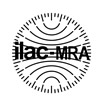It’s very important to review current policies and preventive programs for providing healthier indoor air quality in schools. Educational spaces frequently have serious indoor air quality issues because of low-quality building construction and poor maintenance, cleaning and ventilation.
Why it is necessary to monitor IAQ in schools
According to the EPA, most of the people spend 90% of their time indoors, exposed to air that is up to five times more polluted than outdoors. The IAQ in schools can cause various short and long-term negative health effects, so that’s the reason it is recognized as a priority topic for public health. Indoor air quality pollutants are harmful for students with allergies, asthma or airway hyperresponsiveness.
Many factors influence indoor air pollution levels. These include:
- Activities of building occupants (including maintenance activities)
- The types of building materials
- Furnishings and equipment
- Outdoor air quality
- The season
- Indoor humidity and temperature
- Ventilation rates
In this context, indoor air quality monitoring is one of the measures that schools are taking to improve the health and well-being of users, aiming to provide real-time monitoring of indoors spaces for enhance educational environments.
Harmful indoor pollutants for students
Dioxide carbone (CO2)
Increasing CO2 levels is caused by poor ventilation rate, air exchanges and airflow. Various researches were found poor ventilation is related to current asthma, cough, hoarseness or pain in throat, mucosal irritation, dizziness, dry or irritated throat, irritated or itchy eyes, headache, runny nose and dry, irritated or stuffy nose. Also, the presence of high humidity inside school buildings due to water-damaged construction material is frequently related to the presence of mould allergens, fungi and bacteria, which contribute to the worsening of breathing problems.
Carbon monoxide (CO)
Some of potential sources of carbon monoxide are gas heating systems such as building heaters and stoves, or burners used in science labs. Carbon monoxide is relatively harmless in small doses. These are the likely symptoms associated with its increasing exposure: headache, dizziness, fatigue or chest pain.
Particulate matter (PM 2.5 and PM10)
The concentrations of PM 2.5 and PM10 are often higher in schools than in adult work environments. This can be related to the use of chalk to write on the blackboard and to a higher indoor physical activity of the children. Indoor particulate matter concentration was found to be related to the prevalence of eye, nose and throat irritation symptoms.VOC’s
Volatile organic compounds (VOCs) and formaldehyde are emitted from the ceilings of educational buildings and from furniture made from industrially produced hardboard or paneled materials. Also, paint and cleaning products are potential VOCs emitters. VOC exposure is related to the prevalence of Sick Building Syndrome (SBS): conjunctival irritation, nose and throat discomfort, headache, allergic skin reaction, epistaxis, fatigue, dizziness, etc.
If measures are taken to counteract this risk, like indoor air quality monitoring, it could be reduced the negative effects on the children’s health. Nanoenvi IAQ is a powerful device that can teach users how to adopt new habits to create healthier air quality in educational spaces. If you are interested in it, join Nanoenvi’s early-access partner program and contact us.











